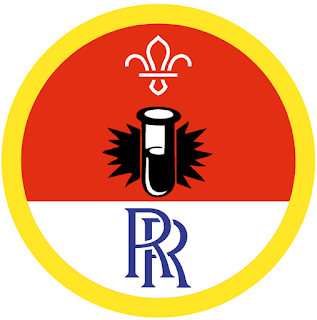Scouts: Scientist Activity Badge
Spark your curiosity and creativity with the Scientist activity badge. Have fun learning some valuable science-based skills. Pop on your safety goggles and get experimenting.
To earn your badge, do three out of the four science activities below. Then watch the Tim Peak video on the attached link and just like the wire wool experiment has been explained pick one of your own experiments and find out how it links to the real world and explain the science behind it. For each one, take photographs and write explanations to email your leader showing what you did and what you found out.
Safety
Science
Supervise young people, and only do science activities that are advised and age appropriate for your section. Test activities first, to make sure you’re confident you can lead them safely. Use protective clothing where necessary.
Scissors
Supervise young people appropriately when they’re using scissors. Store all sharp objects securely, out of the reach of young people
Rubbish and recycling
All items should be clean and suitable for this activity.
PPE
Before completing this activity make sure you have suitable personal protective equipment (PPE). This could include eye or ear protection, gloves, and anything else you need to protect yourself. You’ll know what you need as a result of completing the risk assessment for the activity.
All activities must be safely managed. Do a risk assessment and take appropriate steps to reduce risk. Always get approval for the activity and have suitable supervision and an InTouch process.
Experiment 1 Can the Stain take the Strain
Which substance makes the best stain remover. Look for Laundry lifesavers among some ordinary household products.
You will need: Tables, Chairs, Pens or pencils, A4 paper, Four items of old, unwanted clothing, or large scraps of fabric, Potential stains, Potential stain removers, Potential stain-removing equipment, Small containers (for equipment and potential stain removers), Rubber gloves, if needed, Buckets of water
Stains, removers and equipment
- Potential stains: chocolate, coffee, berries, butter, tomato sauce, oven grease, blackcurrant, grass and ink.
- Potential stain removers: detergent, lemon juice, washing-up liquid, bicarbonate of soda, white vinegar, corn starch, hot and cold water and cola.
- Potential stain-removing equipment: old toothbrushes, kitchen towel, scrubbing brushes, brillo pads and sponges.
Experiment 2 Bear’s bridge-building mission
Work to show that you can create a bridge capable of helping Bear complete his jungle journey.
You will need: Pens or pencils, Scrap paper, scissors, tables, craft materials (eg tissue paper, pipe cleaners, stickers), weights, like coins
Experiment 3 Butcher, Baker, Bath Bomb Maker
Look into the chemistry of clean and make some brilliant bath bombs from Bicarb.
You will need: Bicarbonate of Soda, Citric Acid, Cornflour, Epsom salt (optional), Oil (i.e. Sunflower Oil), Essential oil, orange peel, lavender, dried flowers or similar, Water, kitchen scales, mixing bowls, cups or beakers, whisks, bath bomb moulds (empty yoghurt pots, ice cube trays)
Experiment 4 Compass Crafting
Magnetise before your eyes to create real working compasses from scratch!
You will need: Bowls, Water, Compass (if you don’t have a compass try you can use the one on your iphone), scrap card, pens or pencils, scissors, metal needle, corks or wax paper, magnet.
Experiment with Tim Peake
Watch the Tim Peak video on the attached link and just like this wire wool experiment has been explained pick one of your own experiments and find out how it links to the real world and explain the science behind it.





